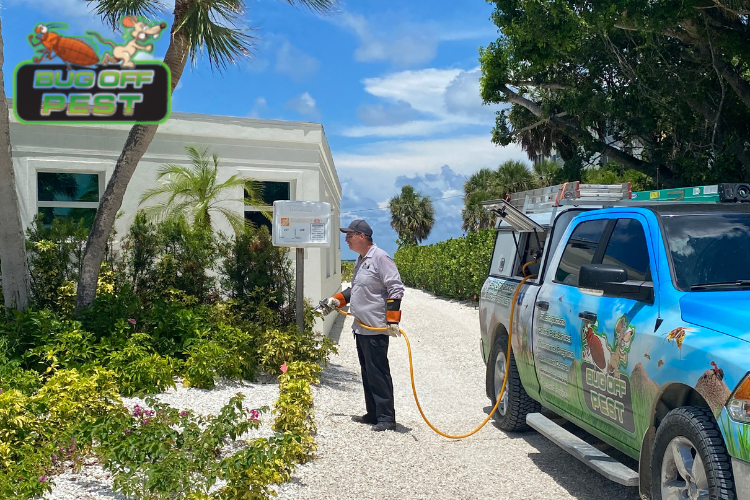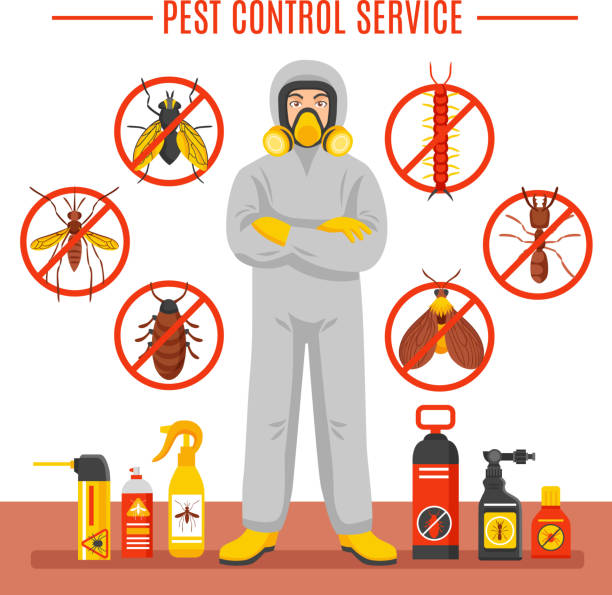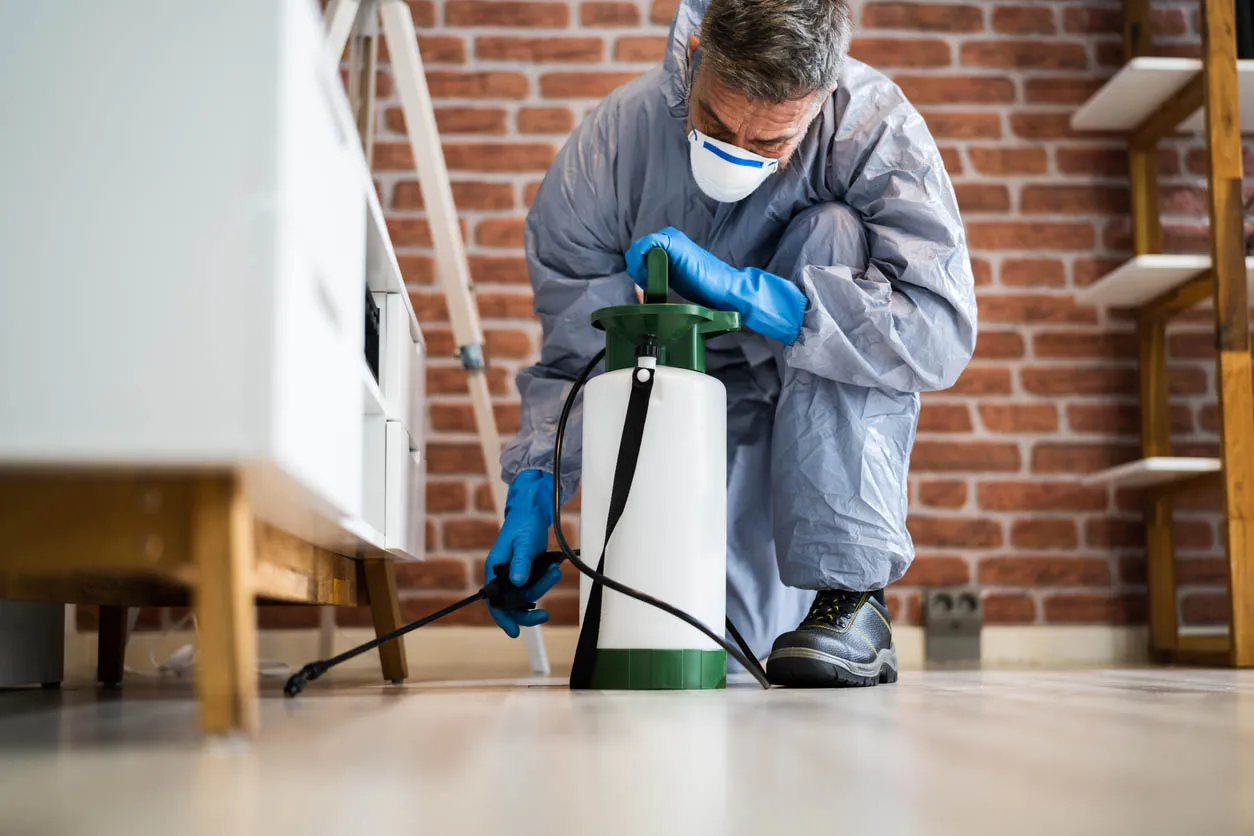Bug Extermination with Port Charlotte Pest Control Service
Bug Extermination with Port Charlotte Pest Control Service
Blog Article
Comprehensive Guide to Comprehending Bug Control Techniques and Their Treatment
Understanding parasite control techniques is vital for effective administration of unwanted organisms that present risks to health and wellness, agriculture, and home. This detailed guide will check out different approaches, consisting of chemical options, organic methods, and mechanical approaches, all under the umbrella of Integrated Bug Management (IPM) As we analyze these methods, it ends up being significantly clear that the choice of method can significantly impact both human passions and ecological balance. What aspects should be considered when selecting the appropriate insect control technique for a details circumstance? The answer might lead to even more sustainable practices than one may at first assume.
Summary of Pest Control Methods
Insect control techniques incorporate a range of techniques created to handle and get rid of undesirable organisms that can hurt human health and wellness, farming, and building. Efficient parasite monitoring is crucial for keeping the honesty of communities and making certain the security of food products. These approaches can be extensively classified into three primary strategies: social, mechanical, and biological controls.

Social control includes changing farming practices or ecological problems to decrease insect establishment and reproduction. Mechanical control depends on physical obstacles or devices to stop pest access or directly eliminate them.
Organic control utilizes all-natural predators, parasites, or virus to manage pest populaces. This method stresses environmental equilibrium and can include introducing helpful bugs, such as ladybugs or predative nematodes, to manage pest existence.
Integrated bug management (IPM) combines these approaches, making use of an alternative approach that emphasizes prevention, monitoring, and accountable monitoring. By employing a mix of these approaches, parasite control can be more sustainable and reliable, lessening reliance on chemical interventions while guarding human wellness and the setting.

Chemical Bug Control Solutions
A selection of chemical parasite control options are readily available, offering reliable alternatives for taking care of pest populaces when various other approaches might fall short. These options mainly consist of pesticides, herbicides, fungicides, and rodenticides, each made to target certain bugs while minimizing damage to non-target organisms.
Insecticides are particularly effective versus a range of insects, including ants, roaches, and termites, and can be categorized as call or systemic agents. Contact pesticides eliminate bugs on contact, while systemic pesticides are taken in by plants, making them poisonous to bugs that feed upon them. Herbicides are utilized to control undesirable plant life, whereas fungicides are essential for taking care of fungal diseases that can damage crops and ornamental plants.
Rodenticides, created for rodent control, are offered in different formulas, including lures and tracking powders. It is crucial to comply with label guidelines meticulously to guarantee safety and efficiency. In addition, incorporated bug management (IPM) concepts ought to be utilized, integrating chemical remedies with social, mechanical, and biological methods for lasting bug control. This alternative method not just boosts pest administration efficiency but also decreases prospective environmental effects related to chemical use.
Organic Pest Control Techniques
Biological parasite control strategies offer an eco-friendly option to chemical methods by using natural killers, bloodsuckers, or microorganisms to handle parasite populations. This method leverages browse around this site the ecological relationships between microorganisms, look these up advertising a well balanced ecological community while reducing chemical deposit in the atmosphere.
Among the most usual organic control methods involves the introduction of natural enemies. For example, ladybugs are employed to control aphid populations, while parasitical wasps can target caterpillars and various other parasites. These natural predators successfully minimize pest numbers without harming advantageous pests.
Furthermore, microbial agents such as bacteria, fungi, and infections are used to infect and kill specific bugs. Bacillus thuringiensis (Bt), a naturally happening bacterium, is commonly made use of to manage caterpillars and other larvae, showcasing the performance of microbial parasite control.

Physical and Mechanical Methods
Often utilized in integrated pest administration methods, physical and mechanical methods work as efficient devices for controlling bug populations without using chemicals. These strategies count on physical obstacles, traps, and other mechanical devices to avoid or eliminate parasites, making them ecologically pleasant choices.
Physical techniques include the use of barriers such as insect netting, displays, or row covers that literally obstruct bugs from accessing plants. This is particularly helpful in farming settings where crop protection is necessary. Furthermore, habitat control, such as removing particles and standing water, can decrease parasite reproducing websites, thereby reducing invasions.
Mechanical methods incorporate catches, which can be designed to record certain parasites. Sticky catches and pheromone traps prevail instances that tempt and retain bugs, facilitating tracking and control. Vacuuming is one more this website mechanical technique, reliable for removing insects from indoor atmospheres, especially in situations of problems.
Preventative Pest Monitoring Strategies
Efficient preventative insect management strategies are important for keeping healthy settings and reducing pest-related issues before they develop (Pest Control in Port Charlotte, FL). These techniques focus on proactive measures that decrease the likelihood of insect infestations by dealing with the origin creates

An additional essential strategy involves proper landscaping methods (Pest Control in Port Charlotte, FL). Maintaining vegetation cut and away from buildings can decrease harborage locations for parasites. In a similar way, executing incorporated pest monitoring (IPM) methods that consist of keeping track of bug populaces and using organic controls can promote a balanced environment that naturally subdues pest numbers.
Education and learning and training for staff and locals on recognizing early indications of insect task are additionally crucial parts of a reliable preventative program. By fostering an atmosphere of understanding and vigilance, companies and home owners can greatly improve their insect monitoring efforts and guard their rooms against future problems.
Final Thought
To conclude, reliable parasite control needs a multifaceted strategy that integrates chemical, biological, and mechanical approaches. Utilizing an Integrated Bug Monitoring (IPM) framework permits the sustainable monitoring of pests while reducing ecological impact. Preventative methods additionally boost the efficiency of these approaches, making sure lasting defense of health, agriculture, and building. Ultimately, a complete understanding of these varied insect control strategies is necessary for accomplishing successful outcomes in insect monitoring initiatives.
Report this page